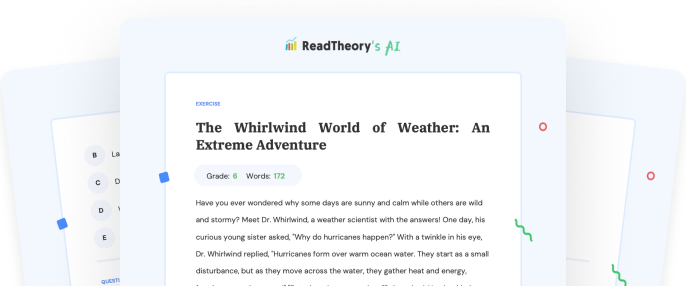Transform Your Teaching
with AI-Powered Worksheets
With ReadTheory’s Instant Worksheet Builder, you can create engaging, grade-appropriate worksheets tailored to your students in minutes. Spark curiosity, save time, and empower critical thinking with AI-powered tools designed for teachers like you.


Harnessing Diversity in Engineering: A Pathway to Innovation
"Diversity in engineering is like a kaleidoscope - each piece, unique in shape and color, contributes to a beautiful, intricate pattern when seen together. This pattern embodies a range of solutions that can tackle complex, real-world problems. Engineering is not restricted to one type of individual or a singular approach. Instead, it thrives on the infusion of different cultures, genders, educational backgrounds, and experiences.
Presently, the engineering landscape is skewed. Women and racial minorities are underrepresented, resulting in a lack of diverse perspectives. This reality is not due to a disparity in talent or aptitude but largely due to systemic issues and stereotypes. The need to balance this scale and foster a more inclusive environment has never been more critical.
Several initiatives are propelling this change. From scholarship programs for underprivileged students to workshops encouraging women in STEM, society is nudging the engineering landscape towards inclusivity. Such efforts help dismantle barriers and empower individuals from all walks of life to consider a career in engineering.
Furthermore, the growing intersection of engineering with fields such as biology, arts, or social sciences fosters diversity. It showcases how engineering is not a standalone discipline but an integrated platform that welcomes varied educational backgrounds.
In essence, diversity in engineering is not just about numbers or ticking boxes. It is about harnessing different perspectives to drive creativity and innovation. It is about understanding that the best solutions come from considering all angles of a problem. It is about valuing the unique contributions each person can bring to the table. Just like in a kaleidoscope, every unique piece plays a vital role in creating the final magnificent image."
Question 1
What does the kaleidoscope analogy signify in the context of engineering diversity?
The variety of engineering disciplines
The complexity of engineering problems
The need for colorful designs in engineering
The diversity of people and ideas in engineering
The role of optics in engineering
Question 2
Why is the engineering landscape skewed according to the text?
Due to a lack of interest in engineering
Due to a lack of talent
Due to systemic issues and stereotypes
Due to an overrepresentation of men
Due to a lack of educational resources
Question 3
What is the purpose of initiatives such as scholarships and workshops as mentioned in the text?
To increase the number of engineers
To encourage more people to consider a career in engineering
To provide financial aid for engineering students
To promote engineering in STEM
To provide additional training for existing engineers
Question 4
What does the intersection of engineering with other fields such as biology, arts, or social sciences foster?
Interdisciplinary research
Diversity in engineering
Technological advancements
New engineering disciplines
A broader curriculum
Question 5
What is the ultimate aim of fostering diversity in engineering according to the text?
To ensure an equal representation of genders and races
To drive creativity and innovation by harnessing different perspectives
To create a more inclusive environment
To make engineering a standalone discipline
To provide equal opportunities for all
 or share via
or share via

Assign the ReadTheory pretest to determine students' reading levels.

Why Teachers Love
Instant Worksheet Builder?

Tailored Content for Every Student
Craft worksheets with passages and multiple-choice questions customized to your chosen topic and grade level, ensuring relevance and engagement.

Save Hours
of Prep Time
Our AI, Lexi, generates complete worksheets—passages, questions, and answers—in minutes, freeing you to focus on teaching, not planning.

Standards-Aligned Learning
Every worksheet is designed to boost reading comprehension and critical thinking, aligning seamlessly with State Standards to help your students shine.
Personalized teaching
for personalized learning
Browse worksheets created and refined by educators using Lexi—your source for inspiration and ready-to-use resources.


ReadTheory is free for Teachers to use.
Join thousands of educators using ReadTheory for free. Sign up today and start creating in just minutes!





